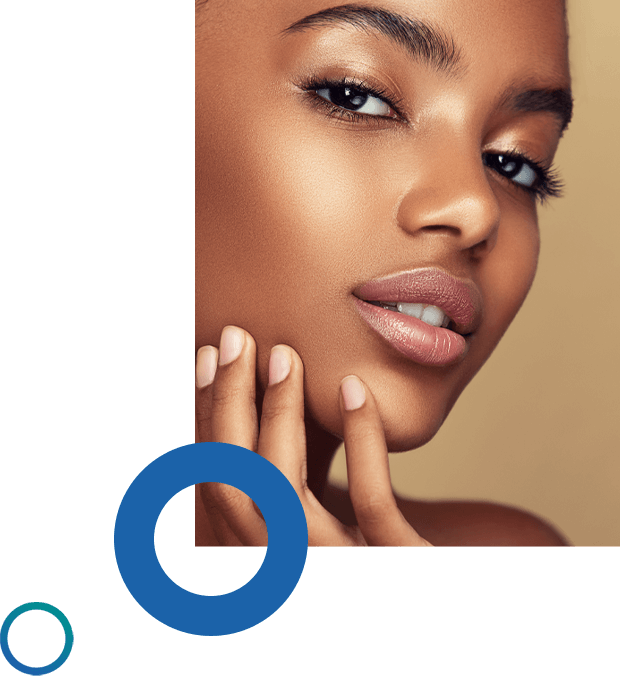Free express quote
FAST FREE & PRIVATE QUOTATION
Get your Plastic surgery at affordable prices in Tunisia. Fast, easy and privately.
Free online quote
What are the objectives of an Ethnic Rhinoplasty
The objective of every African nose job is completely unique to each patient. Every patient and every nose will have different goals that will be defined during an in-depth consultation with the Dr. However, all of our African rhinoplasty share a common goal, creating a nose that best fits the face.
In general, African patients want to achieve the following goals with their rhinoplasty surgery:
- Making the nostrils more narrow
- Increasing the size of the nose when looking at the profile
- Improving definition of the tip
- Fixing the drooping tip
- Creating a natural nose to fit the face
The unique qualities of an African nose
It would be naive to say any quality is present in all African noses. There are certain characteristics that tend to be more common in African noses that should be identified by a rhinoplasty specialist. The Dr. examines the noses of all of his African patients for the following unique qualities:
- Thickness of the nasal skin. African skin can be thicker, inelastic, and sebaceous. Thick skin can prevent definition of the nose.
- Length of the nasal bone. African may have shorter nasal bones. Short nasal bones do not support the nose well. Additional supporting grafts must be placed into the nose to prevent collapse many years after the surgery.
- Definition of the nasal tip. African nasal tip is commonly poorly defined and droops. The tip will require special maneuvers to achieve definition,although this may be limited due to thick skin.
- Size of the nose. The African nose may be small when looking at the profile because it may not stick out far from the face. In this case, the nose actually may have to be made BIGGER so that it appears SMALLER. This point is often hard for the patient to understand, but the Dr. will explain this concept in further detail during a consultation.
- Size of the nostrils. If the nostrils are wide and flared, then the nostrils may need to be narrowed with an alar base reduction procedure.
- Support of the nose. The cartilage in the nose may be weak. Since the nose has to last a lifetime, the nasal structure must be strengthened so that the nose does not change over time.
Before and after the Ethnic Rhinoplasty
The Ethnic nose surgery is more of a reconstructive surgery when compared to non-ethnic rhinoplasties. A bony and cartilaginous framework supports the nose. The cartilages in African are weaker and require support, including:
- Cartilage from the nose and other areas of the body added to support the nose and tip
- Nose built up from the profile view with the addition of more cartilage
The nostrils are typically narrowed with incisions made in the creases of the nose. They are placed in this location to hide the delicate incision lines. During surgery, the surgeon uses special sutures and grafts to define the nasal tip.
Cartilage collection locations to support and build up the nose
Cartilage is harvested from other areas of the body and then used to support and rebuild the nose. Cartilage can be harvested from the following 3 locations:
- 1) The nasal septum – The cartilage that separates the right and left nasal passageway.
- 2) The ear – The incision is hidden behind the ear. There is very little perceived change in the ear.
- 3) Rib – On noses that require a considerable amount of cartilage, a small piece of a rib can be harvested. This is only used if necessary.
Often patients ask for an implant, such as silicone or Gore-Tex, to help build and strengthen the nose. While this will make the surgery easier for the surgeon, he rarely places unnatural permanent products into the nose during an African rhinoplasty in Charlotte due to the higher risk of complications.
Recovery from an Ethnic Rhinoplasty
Recovery from rhinoplasty generally lasts 1-2 weeks. You will be
able to return to work or your daily activities within 7-10 days
after the surgery.
Here are some general guidelines for recovering from
arhinoplasty procedure:
- All patients can stay in a recovery suite with a private nurse or have a private nurse in their home for the first few nights if desired. This is not necessary, but may be an effective option.
- Incisions are cleaned during the first week.
- Cast and tape remain on nose for one week.
- The nose will need to be irrigated after one week.
- Start using special creams to help with healing starting at week two.
- Return to walking after one week and more vigorous exercise at three weeks.
So, improving improving the appearance of the nose is very important nowadays as it allows the patient to regain self confidence.
